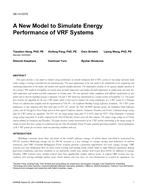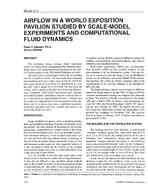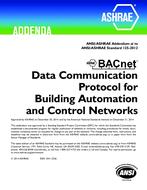Many studies have highlighted that American supermarkets are energy-intensive commercial users of energy with approximately 54.5 billion kWh of electricity consumed annually. Refrigeration and HVAC systems account for about 50% and 10% of the electrical load, respectively, and refrigeration compressors alone constitute about 30%. There is a direct and strong interaction between the refrigerated display cases and space conditioning systems and the store air conditions. The conditioned store air exchanges heat and moisture with the refrigerated cases. Most refrigerated cases are designed to operate in an environment of 55% RH and 75°F (24°C). However, removing additional moisture with HVAC systems to lower store RH levels at 75°F (24°C) could yield overall HVAC and refrigeration energy cost savings. Drier store air will reduce the latent load on the refrigeration compressors by reducing the moisture entering the display cases. This will lead to less condensation and frost formation, reductions in defrost cycles, decreases in anti-sweat heater energy requirements, and improvements in temperature stability of products.
It has been over a decade since Howell and Adams (1991) surveyed the “Effects of Indoor Space Conditions on Refrigerated Display Case Performance†under ASHRAE Research Project 596. At that time they cited the “limited amount of experimental or measured data available.†Since then, laboratory and field work in this area has generated significant additional findings, although not always extensive or consistent in their results. This paper will provide an updated review of currently available databases, from computer simulations, laboratory tests, and field evaluations, that address the effect of supermarket humidity on refrigerated case energy performance. The findings from this database review will be tabulated by case type (if individual case data are available), humidity range (from 55% down to 35% RH, when provided), and case energy performance impact (separately for compressor energy, defrost energy, and anti-sweat energy, whenever possible). Inconsistencies in this group of findings will be highlighted, potential sources for differences in these findings will be explored, and conclusions regarding any consensus in these findings will be offered. A comparison will then be made to data published in the ASHRAE Handbooks along with recommendations for any revisions. Finally, recent guidance from ASHRAE has encouraged the incorporation of “rules of thumb†in the Handbooks, so a generic nomograph is presented that could provide the basis for estimating refrigerated case energy consumption and demand reductions at lowered humidity levels.
Units: Dual
Citation: Symposium, ASHRAE Transactions, vol. 111, pt. 1, Orlando 2005
Product Details
- Published:
- 2005
- Number of Pages:
- 10
- File Size:
- 1 file , 2.9 MB
- Product Code(s):
- D-25619


